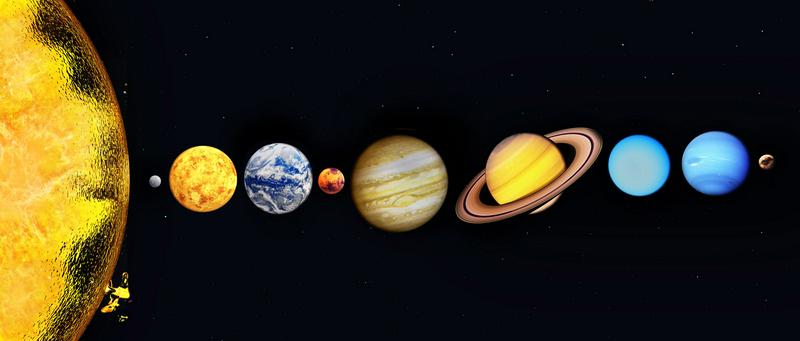Demoting Pluto
By | April 26, 2019

Since 1930, all of our science textbooks have told us that the Milky Way solar system had nine planets orbiting the Sun. Ask any science-minded kid in a generation or two ago and he or she would tell you that Pluto is the smallest planet and the one furthest from the Sun. An icy, barren, and dark planet, Pluto is tiny compared to its neighbors but had some moons orbiting it. It may not have been as glamorous as Venus, flashy as Saturn, or powerful as Jupiter, but Pluto could command some attention from astronomers. That all changed in 2006 when scientists demoted Pluto from full planet status to that of a newly-established celestial category, dwarf planet. Let’s look at the rise and fall of Pluto.

Discovery of Pluto
As early as the 1840s, there was speculation among astronomers that an undiscovered planet might exist beyond Neptune because it appeared that something was affecting the orbit of Neptune. In 1909, astronomers Percival Lowell and William H. Pickering developed theories and several possible locations for this unknown planet. Using telescopes at the Lowell Observatory in Arizona, founded by Lowell, the two men attempted to locate this planet, which they called Planet X, but to no avail. In 1929, a 23-year old astronomer named Clyde Tombaugh was assigned to review Lowell and Pickering’s research too, once again, pick up the search for the unknown planet.

Clyde Tombaugh Finds Pluto
Tombaugh’s work was tedious. He had to create sets of photographs of the sky and compare them to see if any of the objects in the night sky had moved positions. Finally, on February 18, 1930, after more than a year on the job, some of Tombaugh’s photo sets indicated a moving object. The head of the Lowell Observatory telegraphed news of the finding to the Harvard College Observatory’s astronomers and they were able to verify the findings. The planet came to be called Pluto, after the Greek god of the underworld.

Pluto Inspired Walt Disney
The world was abuzz with news of the newly-discovered planet at the edge of the solar system. Even Walt Disney was thrilled with the discovery. That same year, he released a new character, a lovable dog who was the beloved pet to Mickey Mouse. He named this pup Pluto.

Learning About Pluto
Since its discovery, astronomers have learned a lot about the smallest and furthest planet. They have determined that the surface of Pluto is mostly nitrogen ice with a little bit of carbon monoxide and methane. They found that the geography of Pluto is diverse, with mountains, valleys, and plains. They found that Pluto’s rotation is much slower than Earth’s, making one day on Pluto equal to 6.39 days on Earth. The orbit around the Sun is much slower as well. It takes about 247 Earth years for Pluto to complete one orbit around the Sun, meaning that, since its discovery, it still hasn’t completed an orbit. They also learned that Pluto has five known moons, named Styx, Charon, Nix, Hydra, and Kerberos.

And Then the Bad News
Beginning in the early 1990s, other celestial bodies similar in size to Pluto were discovered in the Kuiper Belt. Astronomers struggled with labeling these celestial bodies as planets. The scientific community realized that the definition of a planet was only loosely defined. The International Astronomical Union, or IUA, went to work detailing the criteria of a planet. In 2006, they formally presented their classification system for celestial bodies at their 26th General Assembly in Prague.

Demoted!
The new definition of a planet is “an object that orbits the Sun and is large enough to have become round due to the force of its own gravity. In addition, a planet has to dominate the neighborhood around its orbit.” Alas, tiny Pluto did not meet the new qualifications. Although it does orbit the Sun, it does not dominate its orbital neighborhood. It is only slightly larger than Charon, its largest moon.

A Dwarf Planet
The IUA developed a new category…dwarf planet…for larger celestial objects that don’t make the cut to be called a true planet. Pluto was downgraded to this new classification. It joined a fairly large group of bodies, though. To date, about 44 dwarf planets have been identified and named, including the asteroid Ceres and Xena, which is bigger than Pluto. Several notable bodies from the Kuiper Belt joined the club.

An Eight-Planet Solar System
Today’s textbooks—that had to be reprinted after the 2006 announcement—show an eight-planet solar system of Mercury, Venus, Earth, Mars, Saturn, Jupiter, Neptune, and Uranus. Students learn these planets, and about the third class celestial bodies, such as asteroids, moons, and comets. Pluto hasn’t lost all its popularity. Footnotes and sidebars in science textbooks inform today’s students of the rise and fall of Pluto.

